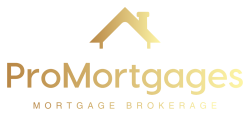B Lending Solutions or Alternative Lending
B lending, also known as alternative lending, refers to mortgage financing offered by non-traditional lenders, such as mortgage investment corporations (MICs), private lenders, and alternative mortgage lenders.

What is B Lending or Alternative Lending in Canada?
B lending, also known as alternative lending, refers to mortgage financing offered by non-traditional lenders, such as mortgage investment corporations (MICs), private lenders, and alternative mortgage lenders. B lenders specialize in providing financing to borrowers who may not meet the strict qualification criteria of traditional A lenders due to credit challenges, self-employment, or other factors.
Key Features of B Lending or Alternative Lending in Canada:
- Higher Interest Rates: B lenders typically charge higher interest rates than traditional A lenders to compensate for the increased risk associated with lending to borrowers with credit challenges or unique financial circumstances. These higher interest rates may result in higher monthly payments and overall borrowing costs for borrowers.
- Flexible Qualification Criteria: B lenders have more flexible qualification criteria than traditional lenders, allowing borrowers with less-than-perfect credit, self-employed individuals, or those with non-traditional income sources to qualify for financing. B lenders focus on the borrower's ability to repay the loan rather than solely relying on credit scores or income documentation.
- Higher Down Payment Requirements: B lenders may require borrowers to provide a higher down payment than traditional lenders, typically ranging from 10% to 20% of the property's purchase price. A larger down payment reduces the lender's risk and provides additional security for the loan.
- Shorter Loan Terms: B lending options may offer shorter loan terms than traditional mortgages, ranging from one to five years. Shorter loan terms allow borrowers to improve their credit profile and financial situation over time, with the goal of refinancing into a traditional mortgage with lower interest rates in the future.
- Less Documentation: B lenders may require less documentation than traditional lenders, making it easier for borrowers to qualify for financing. While borrowers must still demonstrate their ability to repay the loan, B lenders may be more lenient in their documentation requirements, particularly for self-employed individuals or those with non-traditional income sources.
Benefits of B Lending or Alternative Lending in Canada:
Access to Financing
B lending provides an alternative financing option for borrowers who may not qualify for traditional A lending due to credit challenges or unique financial circumstances. B lenders offer flexibility and accessibility to borrowers who may otherwise struggle to secure mortgage financing.
Opportunity for Homeownership
B lending allows individuals with less-than-perfect credit or non-traditional income sources to achieve their homeownership dreams. By providing financing to borrowers who may not qualify for traditional mortgages, B lenders help expand access to homeownership opportunities in Canada.
Credit Rebuilding
For borrowers with credit challenges, B lending can provide an opportunity to rebuild their credit profile and improve their financial situation over time. By making timely mortgage payments and demonstrating responsible financial behavior, borrowers can work towards qualifying for traditional A lending in the future.
Flexible Terms and Features
B lending options offer flexible terms and features to meet the diverse needs of borrowers. Whether you’re purchasing a home, refinancing an existing mortgage, or consolidating debt, B lenders have options to suit your needs and financial goals.
How to Qualify for B Lending in Canada:
To qualify for B lending in Canada, borrowers must meet the following criteria:
- Credit Challenges: B lending is designed for borrowers with less-than-perfect credit or unique financial circumstances. Borrowers who have experienced credit challenges, such as missed payments, defaults, or bankruptcies, may qualify for B lending.
- Self-Employment: B lending is well-suited for self-employed individuals or those with non-traditional income sources who may not meet the strict income verification requirements of traditional lenders. B lenders consider the borrower's ability to repay the loan based on their income and financial situation.
- Down Payment: B lenders typically require borrowers to provide a higher down payment than traditional lenders, ranging from 10% to 20% of the property's purchase price. A larger down payment reduces the lender's risk and provides additional security for the loan.
- Ability to Repay: B lenders assess the borrower's ability to repay the loan based on factors such as income, employment history, and debt-to-income ratio. While B lenders may be more flexible in their qualification criteria, borrowers must still demonstrate their ability to afford the mortgage payments.
Contact Ramanpreet for your Queries
Let’s start the journey together and open the door to your new home.


 by Bhasha Infotech
by Bhasha Infotech